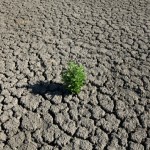This Week in Drought: Inching Towards the Red

Courtesy of U.S. Drought Monitor Map
The latest U.S. Drought Monitor Map shows worse conditions for the state.
While many lawns in Texas might have recovered since last year’s record drought, the lakes and reservoirs that supply water to the state have not. According to recent data from the Texas Water Development Board, just 66 percent of the state’s water supply reservoirs are full.
And judging by the latest U.S. Drought Monitor Map and agricultural reports, a very dry October is beginning to take a toll on the state. A week ago, 60 percent of the state was in some stage of drought. Now that’s climbed to 70 percent, with nearly twenty percent of Texas in the two worst stages, ‘extreme’ and ‘exceptional.’
“Higher temperatures and winds dried out soils,” reads the latest report on crop and weather conditions in North Texas from Texas A&M Agrilife. “Soil-moisture levels were very short to adequate.”
The same goes for other parts of the state.
Many areas are reporting dry, windy conditions, making it difficult for vegetation to grow. That’s a cause for concern, because October is typically one of the wetter months in Texas.
While earlier forecasts for the winter had called for a cooler, wetter season because of the El Niño weather pattern, the most recent reports predict no El Niño for this winter, and a return to average conditions.
It will be difficult for the state’s lakes and reservoirs to recover under those conditions, but the lack of an El Niño doesn’t rule out the potential for significant rain. It does make it less likely, however.
And looking forward to next winter isn’t assuring, either.
“The first set of forecasts indicate an increasing chance of La Niña next winter, 2013-2014,” John Nielsen-Gammon, the state climatologist, told us recently. “So that’s not good news.”
“If we end up with a fourth dry year, things are going to be looking a lot like the drought of record in the 1950s, with multiple consecutive years that are near-normal or way below normal [for precipitation],” Nielsen-Gammon says.

